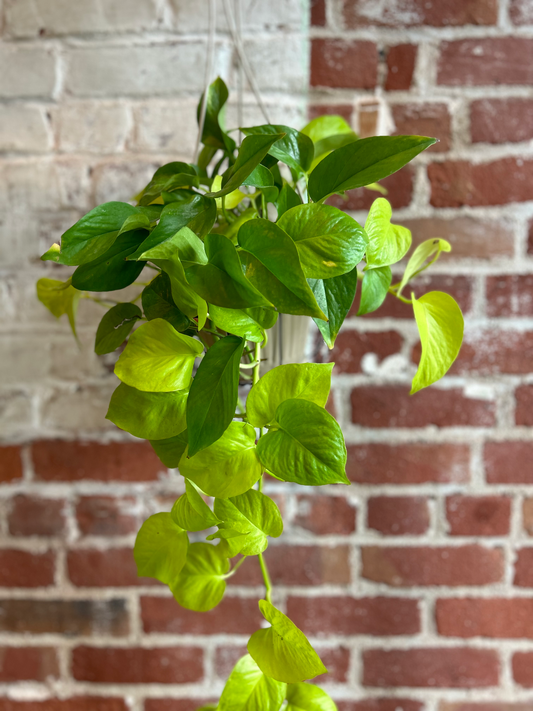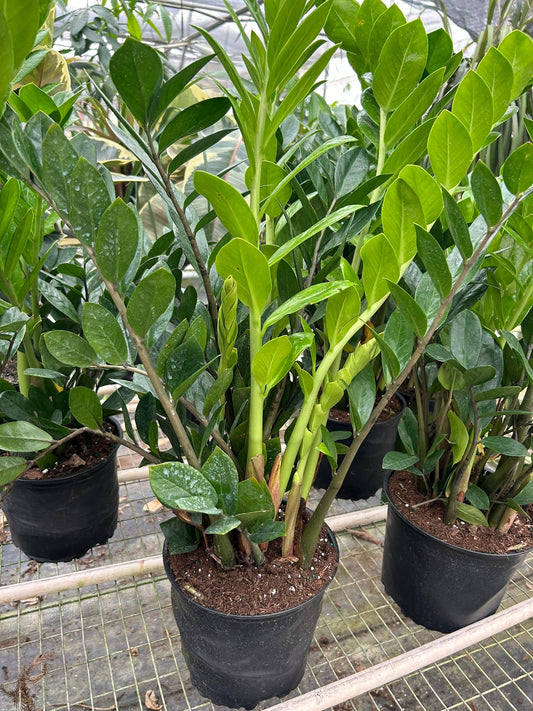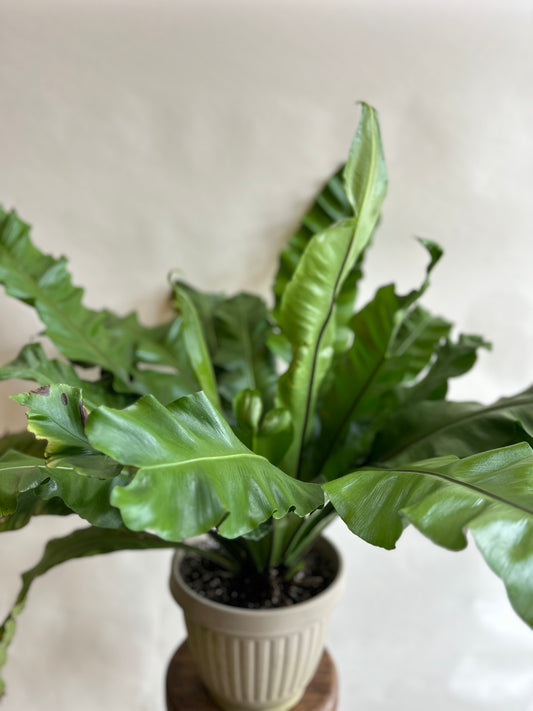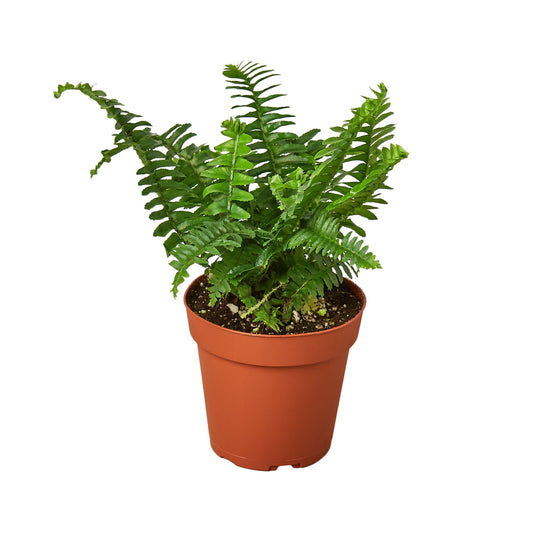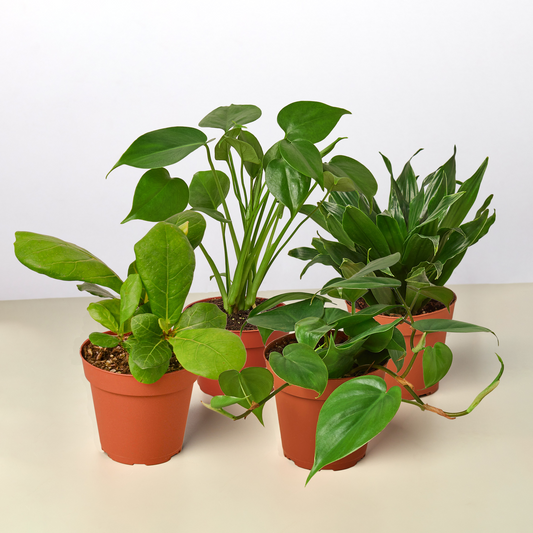Are Umbrella Plants Toxic to Cats?
Cafe Planta Team
Your feline friend has been your constant companion through thick and thin, curling up on your lap during movie nights and providing endless entertainment with their playful antics. But now, as you gaze at your diverse collection of houseplants, you might wonder: is your curious kitty safe around them? Specifically, you may be asking, "Are umbrella plants toxic to cats?"
This article will take you through everything you need to know about umbrella plants and their potential risks to your cat. We'll discuss what makes certain plants hazardous, how to identify symptoms of poisoning, and how to keep your home both cat-friendly and plant-rich. Let's dive into the leafy world of umbrella plants and feline safety.
What Exactly Is an Umbrella Plant?
Umbrella plants, often referred to by their scientific name, Schefflera, are popular houseplants known for their striking, glossy leaves that resemble the spokes of an umbrella. They come in a variety of species, with Schefflera arboricola and Schefflera actinophylla being the most common in homes. These plants are admired for their easy-going nature and ability to thrive with minimal fuss, making them a favorite among plant people.
In terms of appearance, umbrella plants can vary quite a bit. The Schefflera arboricola, for instance, is a smaller variety, often chosen for its bushy, compact form. On the other hand, the Schefflera actinophylla can grow much larger, potentially reaching the ceiling if left unchecked. Their adaptability to different lighting conditions adds to their charm, making them suitable for various spots around the home.
However, while their lush foliage makes them an attractive addition to any space, these plants come with a caveat for pet owners. Understanding what makes them potentially dangerous is crucial for creating a safe environment for your furry friends.
Why Are Some Plants Toxic to Cats?
If you're a plant lover and a cat parent, you've probably heard warnings about certain plants being toxic to pets. But what does that mean exactly? In the case of umbrella plants, they contain calcium oxalate crystals. These microscopic, needle-like compounds can cause irritation when they come into contact with soft tissues.
When a cat chews on a plant with calcium oxalate crystals, these sharp particles can embed themselves in the mouth, throat, and stomach lining. The result? A very uncomfortable kitty. Symptoms can range from mild irritation to severe gastrointestinal distress, depending on the amount ingested and the individual cat's sensitivity.
It's not just umbrella plants that pose a threat. Many common houseplants, including lilies, philodendrons, and pothos, also contain substances that can be harmful to pets. Understanding what makes a plant toxic and how it affects your cat is the first step to ensuring your home is a safe haven for all its inhabitants.
Symptoms of Plant Toxicity in Cats
So, what should you look out for if you suspect your cat has taken a nibble of your umbrella plant? While symptoms can vary, there are some common signs of plant toxicity that every cat owner should be aware of.
Here are a few symptoms to watch for:
- Drooling or excessive salivation: This is often one of the first signs, as the crystals cause irritation in the mouth.
- Pawing at the mouth: Your cat may try to remove the foreign object causing discomfort.
- Vomiting: This can occur if the plant material reaches the stomach and causes further irritation.
- Difficulty swallowing: The discomfort in the throat may make swallowing painful.
- Reduced appetite: If your cat is feeling unwell, they may not be interested in eating.
- Swelling of the mouth or tongue: This is a more severe reaction and requires immediate veterinary attention.
If you notice any of these symptoms, it's important to contact your vet as soon as possible. While mild cases may resolve on their own, more severe reactions could require medical intervention.
Steps to Take If Your Cat Eats an Umbrella Plant
Accidents happen, and even the most vigilant pet owners can find themselves in a situation where their cat has had a brush with a toxic plant. If you suspect your cat has ingested part of an umbrella plant, here's what you should do:
1. Stay Calm
Panic won't help anyone, least of all your cat. Take a deep breath and assess the situation. How much did your cat eat? Are they showing any symptoms?
2. Remove Access to the Plant
Move the plant out of reach to prevent further ingestion. This might mean placing it in a room your cat can't access or moving it to a higher spot temporarily.
3. Rinse Your Cat's Mouth
If your cat will allow it, gently rinse their mouth with water to remove any plant material that might be lingering. Be careful, as your cat might be stressed and not appreciate the extra attention.
4. Contact Your Vet
Even if your cat seems fine, it's always a good idea to get professional advice. Your vet can provide guidance on whether further action is needed based on the amount ingested and your cat's symptoms.
5. Monitor Your Cat
Keep a close eye on your cat for the next 24-48 hours. Look for any changes in behavior or new symptoms that might develop.
Remember, while it might be a scary experience, quick action and a calm demeanor can make all the difference in ensuring your cat's safety and well-being.
Creating a Cat-Friendly Plant Collection
Balancing a love for houseplants with a concern for your pet's safety might seem tricky, but it's definitely doable! There are plenty of beautiful, non-toxic plants that can coexist peacefully with your feline friend.
Here are some pet-safe plant options to consider:
- Spider Plant: Known for its air-purifying qualities, it's safe and easy to care for.
- Bamboo Palm: Adds a tropical feel without the worry of toxicity.
- Boston Fern: A lush addition that is typically harmless to cats.
- Areca Palm: Another palm that brings a sense of the exotic without posing a risk.
- Calathea: With its striking leaf patterns, it adds beauty without danger.
When choosing plants for your home, always double-check their safety with trusted sources. The ASPCA has a comprehensive list of toxic and non-toxic plants, which is a great reference for any pet owner.
By selecting pet-friendly plants, you can create a green oasis that is both aesthetically pleasing and safe for your four-legged family members.
Tips for Keeping Cats Away from Plants
Even if you've chosen the most pet-friendly plants available, you might still prefer that your cat keeps their distance. Cats are naturally curious creatures, and plants can be appealing for play or a quick snack. Here are some tips to keep your feline friend at bay:
- Use Citrus Peels: Cats tend to dislike the smell of citrus. Placing orange or lemon peels in your plant pots can deter them.
- Provide Alternatives: Give your cat their own plants to nibble on, like cat grass or catnip.
- Create Barriers: Use decorative stones or mesh around the base of your plants to make it less appealing for digging.
- Use Motion Sensors: Devices that emit a harmless spray of air when motion is detected can surprise your cat and deter them from approaching the plants.
- Training: Consistently redirect your cat away from plants and reward them for staying away can reinforce good behavior over time.
With a little creativity and patience, you can enjoy both your plants and your pets without too much worry.
Combining Houseplants and Interior Design
Houseplants do more than just brighten up a room—they can be an integral part of your home decor. The trick is to integrate them in a way that complements your style and suits your lifestyle, especially if you have pets.
Consider the following ideas when incorporating plants into your design:
- Utilize Vertical Space: Wall-mounted planters or hanging baskets can keep plants out of reach of curious paws while adding greenery at eye level.
- Mix and Match: Combine different plant sizes and shapes to create visual interest. Use larger plants as focal points and smaller ones as accents.
- Choose the Right Containers: Pots and planters come in every style imaginable. Select ones that reflect your personal taste, whether it be modern, rustic, or eclectic.
- Consider Color Schemes: Use the natural hues of plants to complement or contrast with your existing decor. The deep greens of foliage can work as a neutral backdrop or a bold statement, depending on your approach.
- Lighting Matters: Not only do plants need the right amount of light to thrive, but lighting can also highlight your plants and create a cozy atmosphere. Consider using spotlights or string lights to showcase your greenery.
With thoughtful placement and selection, plants can transform a space, adding both beauty and function. They clean the air, reduce stress, and bring a touch of nature indoors—all while contributing to your home's aesthetic.
The Benefits of Houseplants for You and Your Cat
While we focus a lot on the potential risks plants pose to pets, let's not forget the benefits they bring to the table. Houseplants can improve indoor air quality, boost mood, and even enhance concentration and productivity. But did you know they might also benefit your cat?
Here's how houseplants can positively affect you and your feline friend:
- Air Quality: Plants like spider plants and bamboo palms can help purify the air, creating a healthier environment for you and your cat.
- Stress Reduction: The presence of greenery has been shown to reduce stress and promote relaxation, a benefit for both humans and animals.
- Natural Enrichment: Providing safe plants like cat grass can stimulate your cat's senses and encourage natural behaviors like chewing and sniffing.
Embracing houseplants in a cat-friendly way allows you to enjoy all these benefits without compromising your pet's safety. It's all about finding the right balance and making informed choices.
Conclusion: Finding Balance in Your Plant and Pet-Friendly Home
Creating a home that's welcoming to both plants and pets might require a few adjustments, but the rewards are worth it. By understanding which plants pose a risk and taking steps to mitigate those risks, you can enjoy the best of both worlds.
For those looking to expand their plant collection or find pet-friendly options, Cafe Planta offers a variety of choices to suit your needs. We love helping you on your plant journey, whether you're a seasoned plant parent or just starting out. If you have questions about caring for your plants, feel free to email us or reach out on Instagram. Let's grow together!


